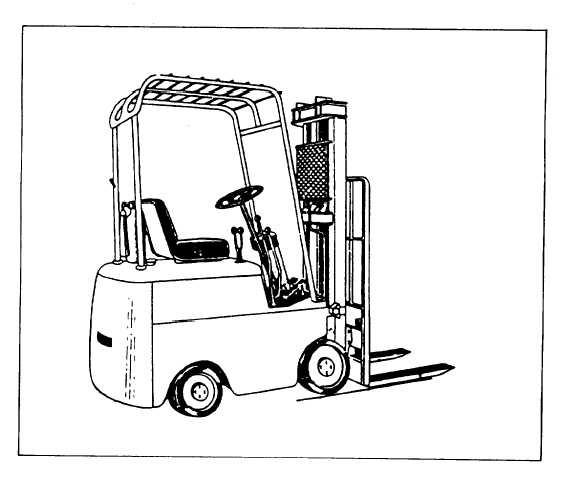| |
size. Always place the highest and strongest cases
at each end of the pallet and the smaller and more
fragile cases in the center. This arrangement
provides a stronger surface for a second tier of
cases on a pallet and also makes it possible to
place a second loaded pallet on top for storage.
Forklift Trucks
A forklift truck is a vehicle designed to pick
up, carry, and stack unit loads of supplies and
equipment. Standard forklift trucks are available
with lifting capacities of 2,000 to 20,000 pounds
and lifting heights of 100 to 210 inches. They may
be powered by gasoline or diesel engine or battery-
electric motor. The battery-electric type is
normally used only for inside operation where
carbon monoxide from internal combustion
engines would be a safety hazard. Forklifts are
equipped with a telescopic mast that permits loads
to be lifted beyond the height of the mast itself.
These loads are counterbalanced by the weight of
the truck with the front wheels acting as the center
of balance.
Forklifts are excellent for handling palletized
unit loads, and they can be used for loads
assembled on skids or in boxes. The forks can be
replaced with special attachments to adapt the
forklift to handle special material such as drums,
reels, and so forth, but the forklift is normally
used for loading and unloading palletized loads
on trailers, trucks, railroad cars, and warehouse
platforms. The forklift illustrated in figure 4-5 is
a solid rubber tire warehouse type powered by a
gasoline engine.
There are so many different makes and models
of forklift trucks that it is difficult to generalize
on their controls. Forklifts have controls for
reverse and forward, are front wheel drive, and
steering is performed through the rear wheels.
There is also another set of controls for the fork.
These controls usually consist of two levers; one
to raise and lower the fork and one to tilt the mast
(supporting frame). The mast is tilted forward to
Figure 4-5.—Forklift truck.
4-8
|

